The Corsair Carbide 600Q Case Review: Upside Down But Right On
by E. Fylladitakis on September 12, 2016 8:30 AM EST- Posted in
- Cases/Cooling/PSUs
- Corsair
- ATX
- E-ATX
The Interior of the Corsair Carbide 600Q
The removal of the case’s panels reveals a simple but very interesting interior, with an inversed motherboard tray, meaning that the motherboard is literally upside down. Corsair based this design on the simple concept that the cool air sinks towards the bottom of the case, making the front and bottom fans more effective as intakes and the rear fan more effective as an exhaust. Furthermore, it allowed the designer to seal the top of the case, significantly improving its acoustics performance.
Cleverly, the designer moved the PSU compartment to the top of the case, putting it at the same height as the 5.25" drive bays. As the PSU is much shorter than other system components, such as the motherboard and long GPU cards, moving the PSU and drive bays above the motherboard allowed the designer to greatly shorten the case without having to worry about hardware compatibility problems.
With the exception of the cooling fan blades, everything inside the Carbide 600Q is black. The metallic parts are sprayed with the same satin black paint as with the exterior of the case, as are most of the plastic parts as well. The only exception is the cover of the PSU compartment, which has been treated with a matte varnish finish. One 140 mm intake and one 140 mm exhaust fan are pre-installed inside the Carbide 600Q, with one more 140 mm fan supplied as an extra.
There is a very large opening on the motherboard tray for the installation of aftermarket CPU coolers, so large that it will extend beyond the boundaries of a Flex-ATX or smaller motherboard. Only a full ATX or Extended ATX motherboard will fully cover the opening. Large openings with rubber grommet coverings for the routing of cables can be seen to the left and above the motherboard area. Two narrow but long openings can be seen below the motherboard, without any grommets installed.
Corsair moved all of the drives to the left side of the case, behind the motherboard tray. Two 3.5” drives can be installed in the slots found beneath the PSU compartment, on plastic trays. These plastic trays can also accommodate 2.5” drives, if required. Three plastic 2.5” drive cages can be seen directly behind the motherboard, allowing the quick and tool-less installation of devices.
To take a look at the case with a finished build inside it, we installed a Corsair AX760i with the red cable set, for strong visual contrast. The AX760i easily fits inside the PSU compartment of the Carbide 600Q, with plenty of room for managing the cables. There is also a massive 28 mm clearance behind the motherboard tray, allowing for the easy routing of cables. The distance between the PSU and the motherboard’s CPU power header is long though, and the EPS power cable could only reach our system’s connector via a straight line, going right above the installed 2.5” drive. Extenders will definitely be necessary for PSUs with shorter cables.
The system area of the Carbide 600Q is very spacious considering the volume of the case. There is a significant clearance between the motherboard and the bottom of the case, allowing for the installation of liquid cooling radiators. We would recommend not installing radiators wider than 30 mm, as they could interfere with the motherboard’s components. The space in front of the motherboard allows for cards up to 370 mm long to the installed, but this distance will be shortened if there is a liquid cooling radiator installed at the front of the case. Users who prefer air coolers should not have to worry, as the case is very wide and there is a significant clearance between the CPU area and the bottom of the case, allowing compatibility with nearly all of the air coolers currently available.
One minor problem about the Carbide 600Q, but one that users checking the windowed 600C version should definitely consider, is that nearly all of the modern hardware has been aesthetically designed with normal orientation in mind. The inverse design will cause designs, logos, and labels to be upside down, much like it does for the chipset heatsink and the GPU cooler labels of our showcase system. This is of no real consequence inside the opaque 600Q, but it will be a serious aesthetics issue for modders trying to build a visually pleasing system inside the windowed 600C.


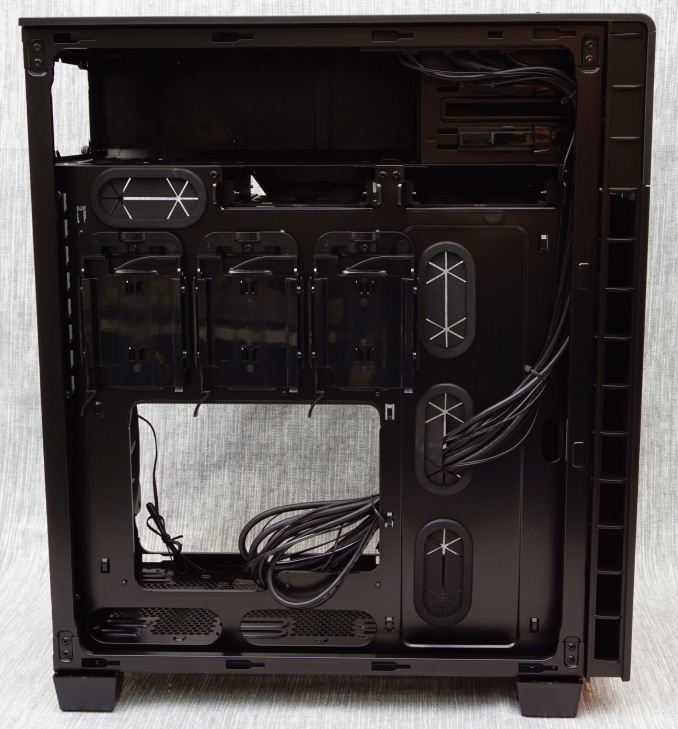

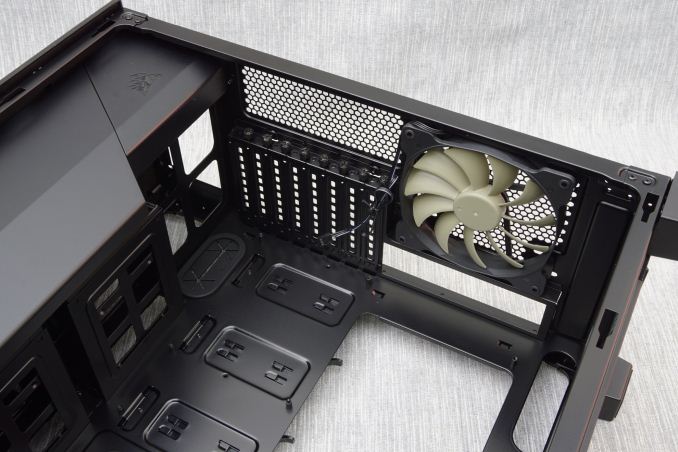
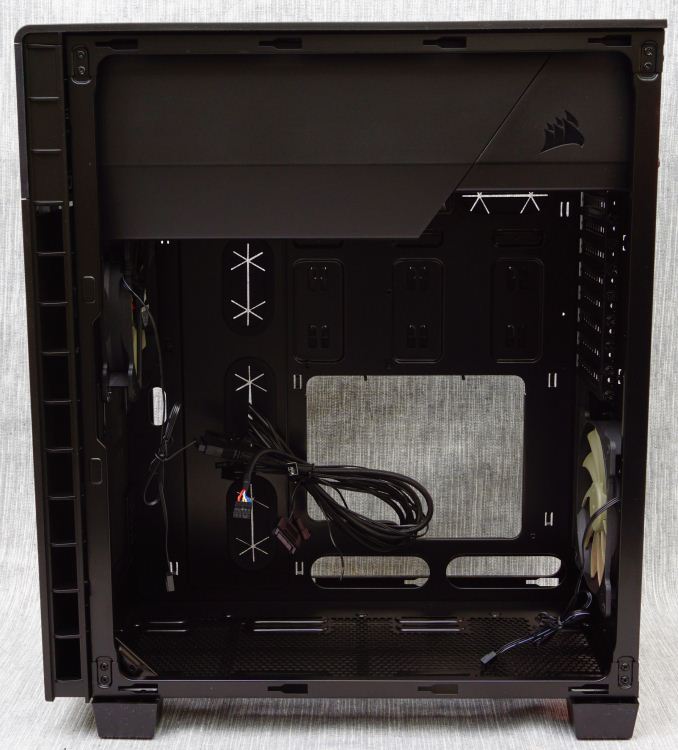
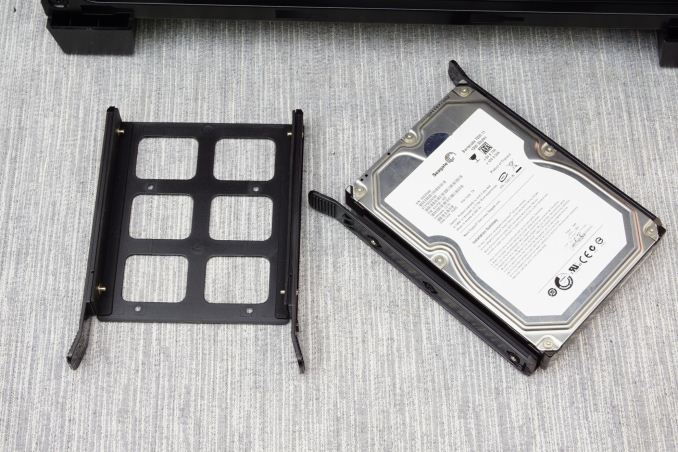
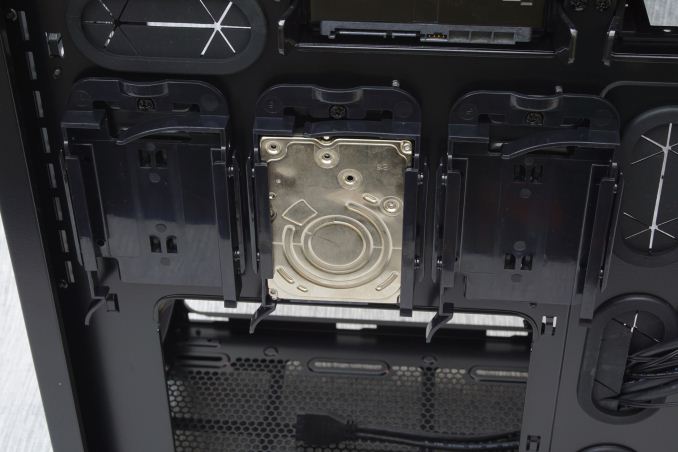

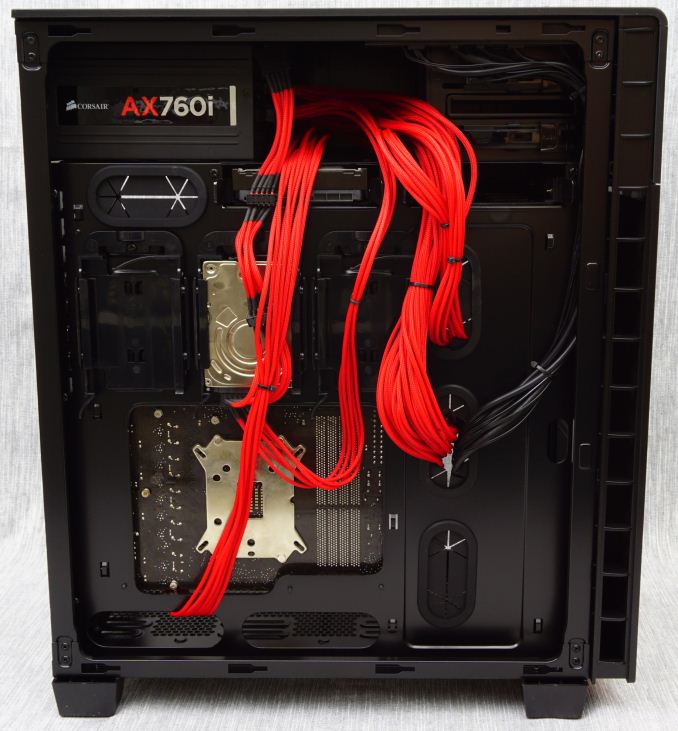








46 Comments
View All Comments
User.Name - Monday, September 12, 2016 - link
I'm not in the "I love my FT02" camp, but I do wish they would update the FT02 as well - or that their patent on 90° rotated motherboards would expire so that other manufacturers could use the design.• Despite the 180mm fan below them, that thing is a hot box for hard drives with an awful plastic mounting system, and there's no ventilation for the SSD mount. It can only hold five 3.5" drives too, which is not many for a case this size.
• If you have optical drives, they can interfere with the PCIe slots and would block airflow from the HDDs if there was any ventilation up there. (yes, I'm apparently a dinosaur now with my need for 2+ optical drives and many HDDs)
• It's a pain having to remove/install the top cover to access the cables. It should be a double-hinged "door" that can open from either side, which can optionally be removed.
• Cleaning the dust filters requires you to remove the top cover and the side panel to gain access. Dust filters should be removable from the front or the side of any case, so that you don't have to move it.
• Despite its huge exterior size (and weight), I actually found the case quite cramped and awkward to build in. Cable management seemed like an afterthought. Remember when high-end cases had removable motherboard trays?
I'm looking to build a new PC in the near future, and struggling to find a good alternative case though. With the size and weight of modern GPUs, I really don't like the idea of one of them hanging unsupported from a PCIe slot.
Azurael - Monday, September 12, 2016 - link
I prefer my PSU to be breathing cool air from outside the case. It's also one less variable to consider when trying to build a positive pressure set-up to minimise dust intake.Lolimaster - Tuesday, September 13, 2016 - link
Actually the PSU works with cooler temps at the bottom (heat goes from bottom to top, so in a top mounted setup, the PSU easy the heat from the mobo, cpu, hdd's and gpu)Spunjji - Tuesday, September 13, 2016 - link
The PSU moving to the bottom was a trend started by silence enthusiasts. You don't get all the warm air in the PC blowing through your PSU, which makes it run cooler and quieter and more efficiently. Having it at the top is a bad idea.seamonkey79 - Monday, September 12, 2016 - link
Read - "I'm young enough to computers to only remember bottom mounted cases."Icehawk - Monday, September 12, 2016 - link
Yup, it is only recently that PSUs are bottom mounted, it used to be a novelty.I have never seen a top mounted machine that was unstable so not really a concern.
IMO orientation all depends on what hardware you will be using.
I wish they would ditch 5" bays, I haven't populated one in 6+ years, they could make atx cases a good bit smaller then.
Ancillas - Monday, September 12, 2016 - link
I thought the same thing, until I put water cooling components into my mid-size. That's why the space is still there on so many cases, just with modular drive bays.If you're not doing water cooling, then yeah, free up that space!
Murloc - Tuesday, September 13, 2016 - link
I remember that even only 10 years ago bottom mounted PSUs weren't a given so how can that beDanNeely - Monday, September 12, 2016 - link
Isn't it amusing the way designs go full circle. Taking advantage of a top PSU + 5.25 bay section and not putting horizontal 3.5" HDDs in front of the mobo isn't new either. My parents circa 2000 Compaq mini tower did the same (although it put the HDD vertical against the front panel).OTOH I'm surprised it took as long as it did to go back to this orientation since it's the most compact way to support a second 5.25 bay for anyone who wants then (a single bay can share space with top fan mounts) while otherwise making the case compact front to back by removing the big HDD cages from the front.
Impulses - Monday, September 12, 2016 - link
Yeah... And this whole business of center of gravity - huh? Biggest selling point for bottom mounted PSU as I remember it originally was moving them away from the hottest component (CPU), but then that shifted to become the GPUs (at least under load)...Course this case doesn't really change that but still. The Silverstone TJ06 had an identical design to this, over ten years ago, when bottom mounted PSU were just starting to become trendy. Only deterrence was a larger top compartment with more bays.